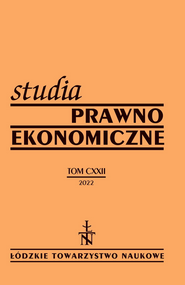LONG-TERM UNEMPLOYMENT IN POLAND BETWEEN 2015 AND 2019
LONG-TERM UNEMPLOYMENT IN POLAND BETWEEN 2015 AND 2019
Author(s): Leszek Kucharski, Eugeniusz KwiatkowskiSubject(s): Labor relations, Present Times (2010 - today), Socio-Economic Research
Published by: Łódzkie Towarzystwo Naukowe
Keywords: unemployment; long-term unemployment; labour force groups;
Summary/Abstract: Background: This article presents an attempt to capture trends in long-term unemployment, determine its structure and intensity regarding labour force groups, and identify factors that contributed to long-term unemployment in Poland between 2015 and 2019. Research purpose: An economic, multifaceted analysis of long-term unemployment in Poland in the years of economic upturn from 2015 to 2019. Methods: An empirical analysis using quarterly aggregate and individual data on unemployment sourced from LFS conducted from 2015 to 2019. Non-parametric and parametric methods (a logit model) were also used. Conclusions: The highest probability of long-term unemployment compared with the base categories characterised people aged 45 or older, people with junior secondary, elementary or incomplete elementary education, the unemployed seeking jobs through labour offices, urban residents, and the residents of voivodeships other than the Mazowieckie voivodeship (excluding Lubelskie). The lowest risk of long-term unemployment compared with the base categories occurred among people aged up to 24 years, higher education graduates, and people with postsecondary and secondary education, married people, active-job seekers, and the residents of the Lubelskie voivodeship.
Journal: Studia Prawno-Ekonomiczne
- Issue Year: 2022
- Issue No: 122
- Page Range: 141-162
- Page Count: 22
- Language: English

